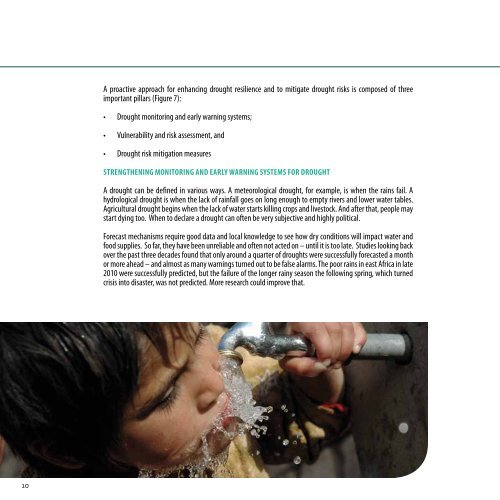The Ripple Effect
2016_Drought_ENG
2016_Drought_ENG
You also want an ePaper? Increase the reach of your titles
YUMPU automatically turns print PDFs into web optimized ePapers that Google loves.
A proactive approach for enhancing drought resilience and to mitigate drought risks is composed of three<br />
important pillars (Figure 7):<br />
• Drought monitoring and early warning systems;<br />
• Vulnerability and risk assessment, and<br />
• Drought risk mitigation measures<br />
Strengthening monitoring and early warning systems for drought<br />
A drought can be defined in various ways. A meteorological drought, for example, is when the rains fail. A<br />
hydrological drought is when the lack of rainfall goes on long enough to empty rivers and lower water tables.<br />
Agricultural drought begins when the lack of water starts killing crops and livestock. And after that, people may<br />
start dying too. When to declare a drought can often be very subjective and highly political.<br />
Forecast mechanisms require good data and local knowledge to see how dry conditions will impact water and<br />
food supplies. So far, they have been unreliable and often not acted on – until it is too late. Studies looking back<br />
over the past three decades found that only around a quarter of droughts were successfully forecasted a month<br />
or more ahead – and almost as many warnings turned out to be false alarms. <strong>The</strong> poor rains in east Africa in late<br />
2010 were successfully predicted, but the failure of the longer rainy season the following spring, which turned<br />
crisis into disaster, was not predicted. More research could improve that.<br />
10


